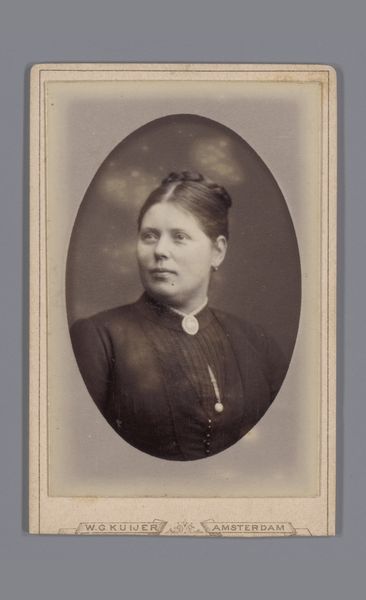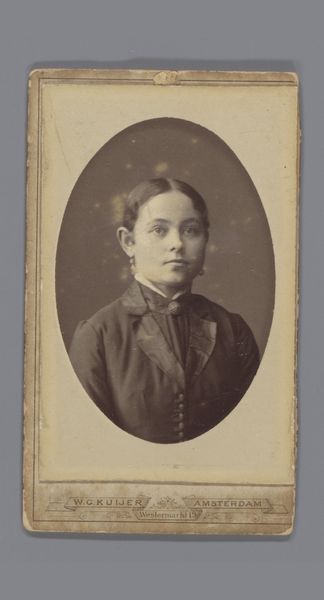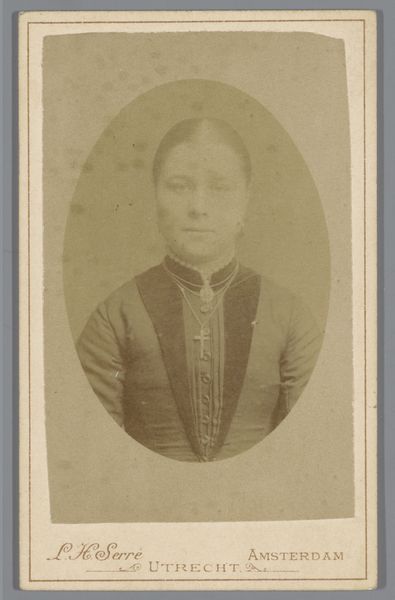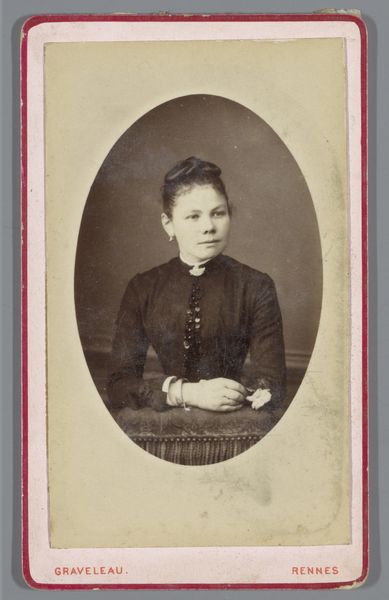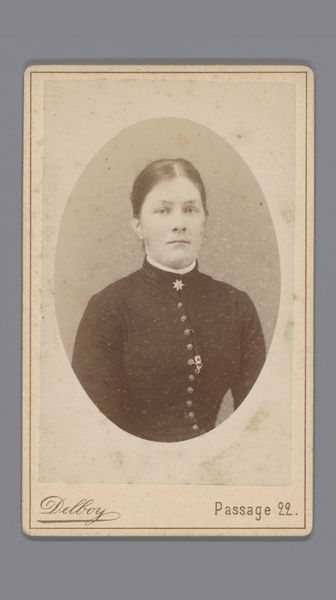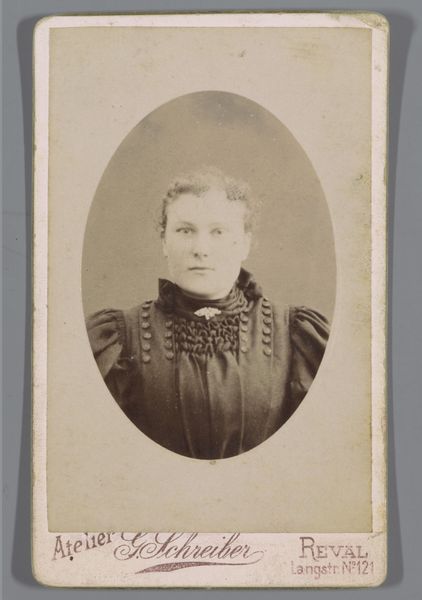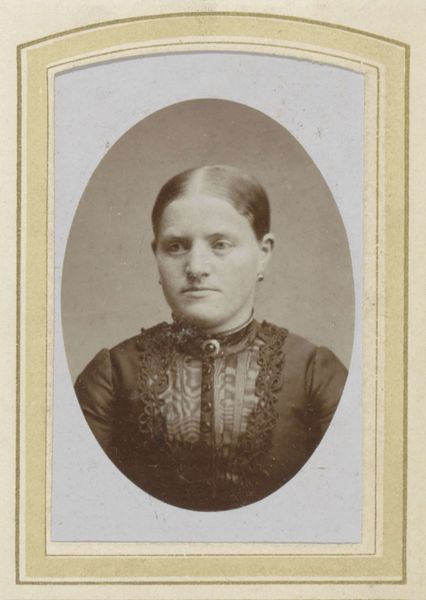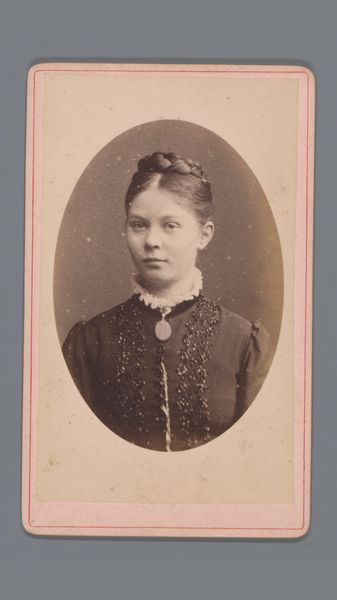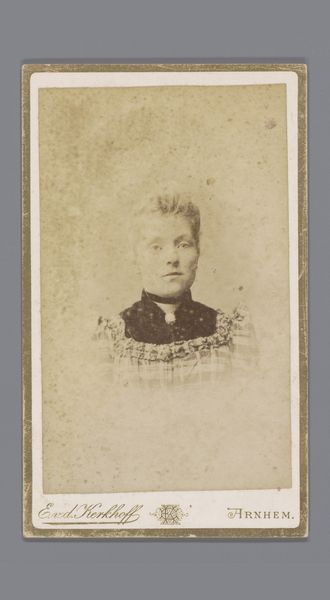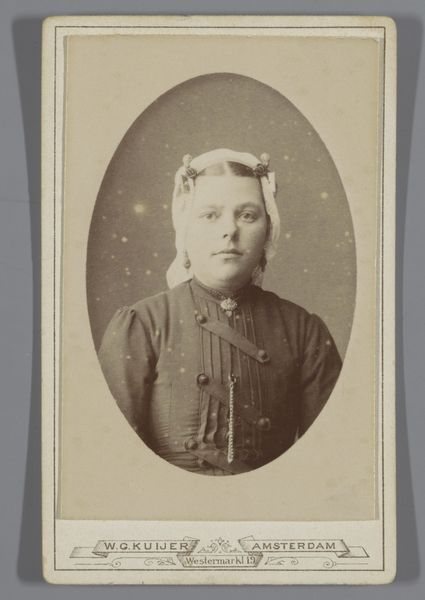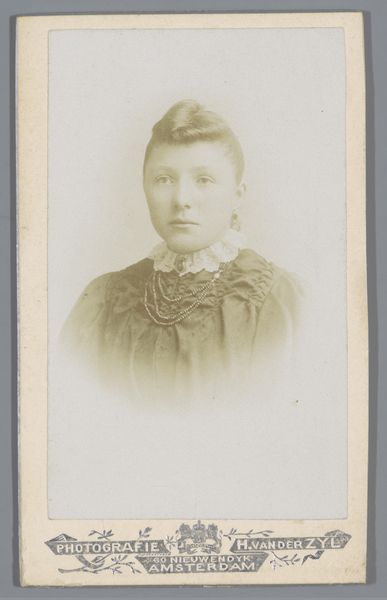
photography, gelatin-silver-print
#
portrait
#
aged paper
#
photo restoration
#
light coloured
#
photography
#
gelatin-silver-print
#
genre-painting
#
realism
#
historical font
Dimensions: height 104 mm, width 65 mm
Copyright: Rijks Museum: Open Domain
Curator: Here we have a fascinating gelatin-silver print from between 1880 and 1910, attributed to Photographie De Concurrent, titled "Portret van een onbekende jonge vrouw," or Portrait of an Unknown Young Woman. Editor: Isn't it striking how someone we'll never know can still meet your gaze like that? There's a real person behind that faded image. It gives me a wistful feeling. Curator: The genre painting aspect is what initially grabbed my attention. Considering the social and political climate of the time, we might explore her presentation in the portrait, from dress to adornment, through the lens of class and perhaps, nascent feminism. Editor: Exactly! The high-necked dress and modest expression suggest constraints. I can’t help imagining her inner world brimming with untold stories, ambitions, even rebellion bubbling underneath. What if she secretly yearned to be an artist herself? Curator: A particularly potent reading, when you consider how the photograph itself might have served as a tool for self-representation and potentially subverting established social norms, despite its apparent conformity. It makes me think about women in similar photos throughout history who history may not know and how this photographic trend, not unlike today’s selfie-centric internet culture, allowed for increased self-representation. Editor: It's the little details, isn’t it? That hint of light-colored aged paper, the font used by “Photographie De Concurrent,” it feels like clues to an otherwise silent story, like whispers from the past urging us to really see this person. Curator: The light-colored paper really puts this piece of material culture into a temporal setting; we get a clear understanding that this image and subject of the image, have some kind of significance to someone somewhere, still. I also believe this work makes a point that photography as it transitioned into its artistic phases of life during the late 19th-century, served as a form of democratization for all subjects to memorialize the existence through capturing moments in time. Editor: Agreed. Now I see her less as unknown and more like an ancestor—someone to acknowledge and respect. This anonymous photograph really does invite us to connect across the ages.
Comments
No comments
Be the first to comment and join the conversation on the ultimate creative platform.
